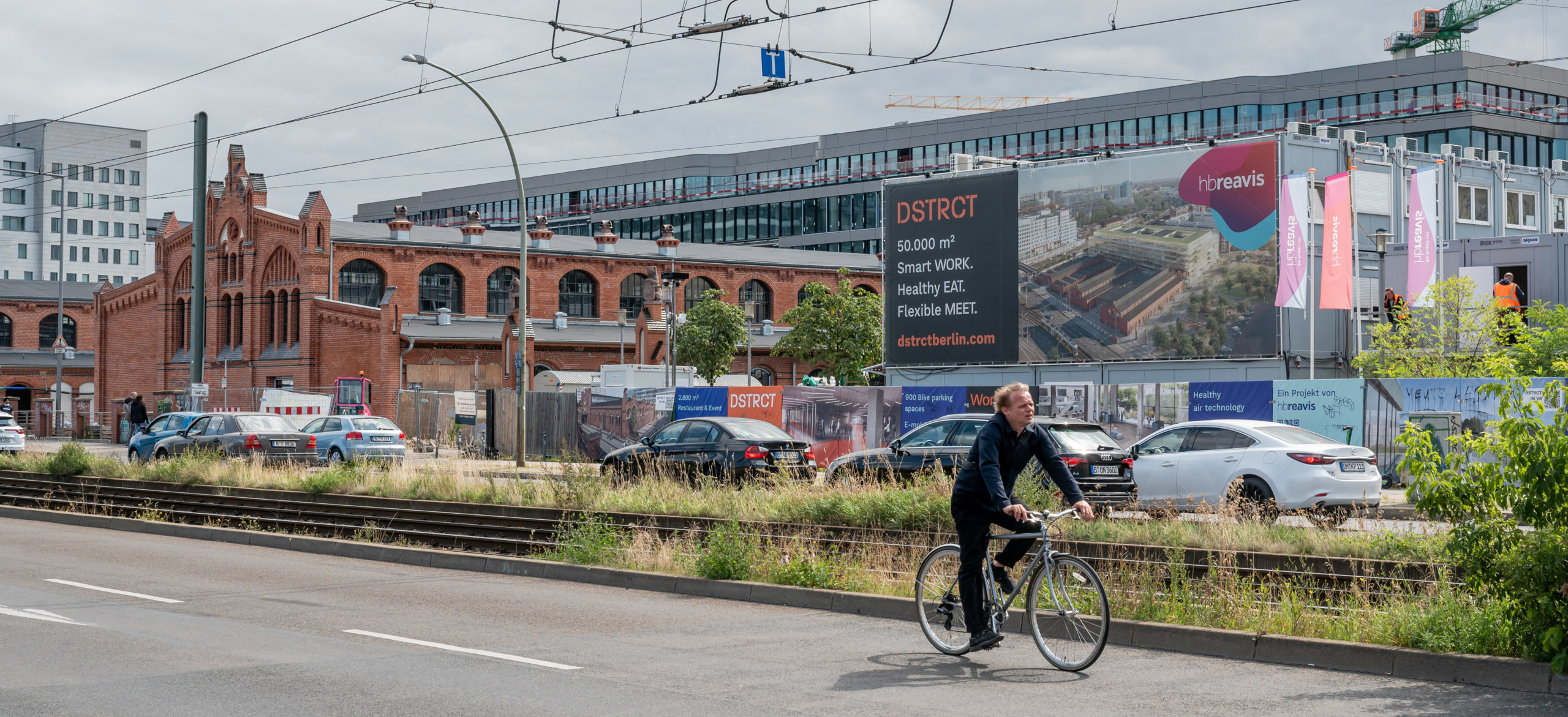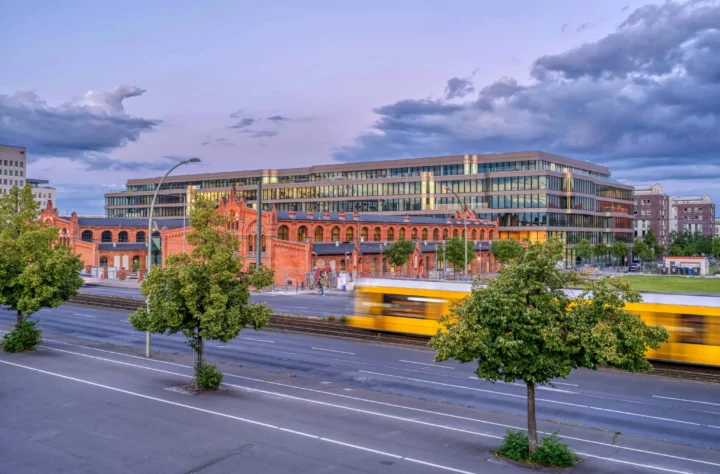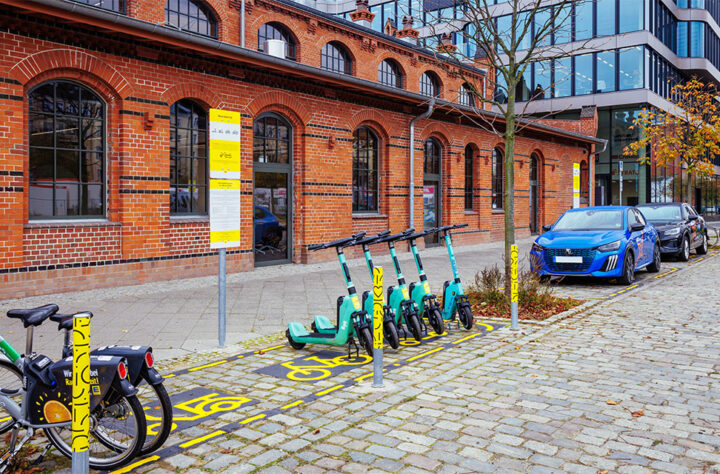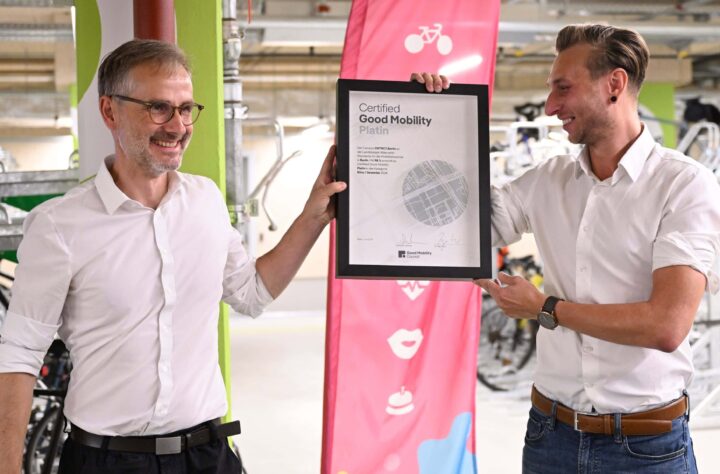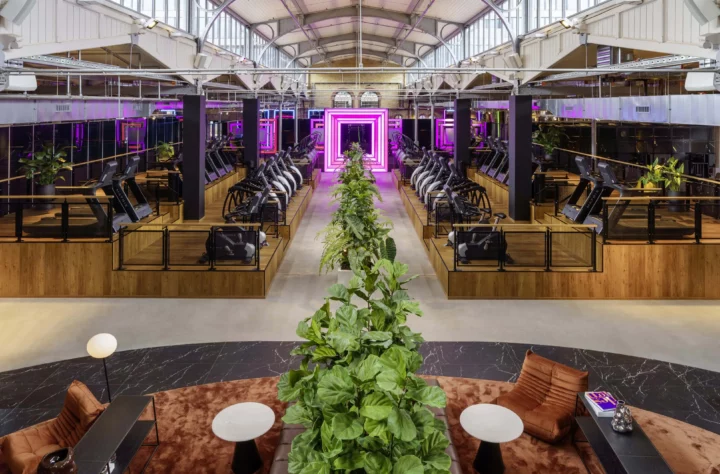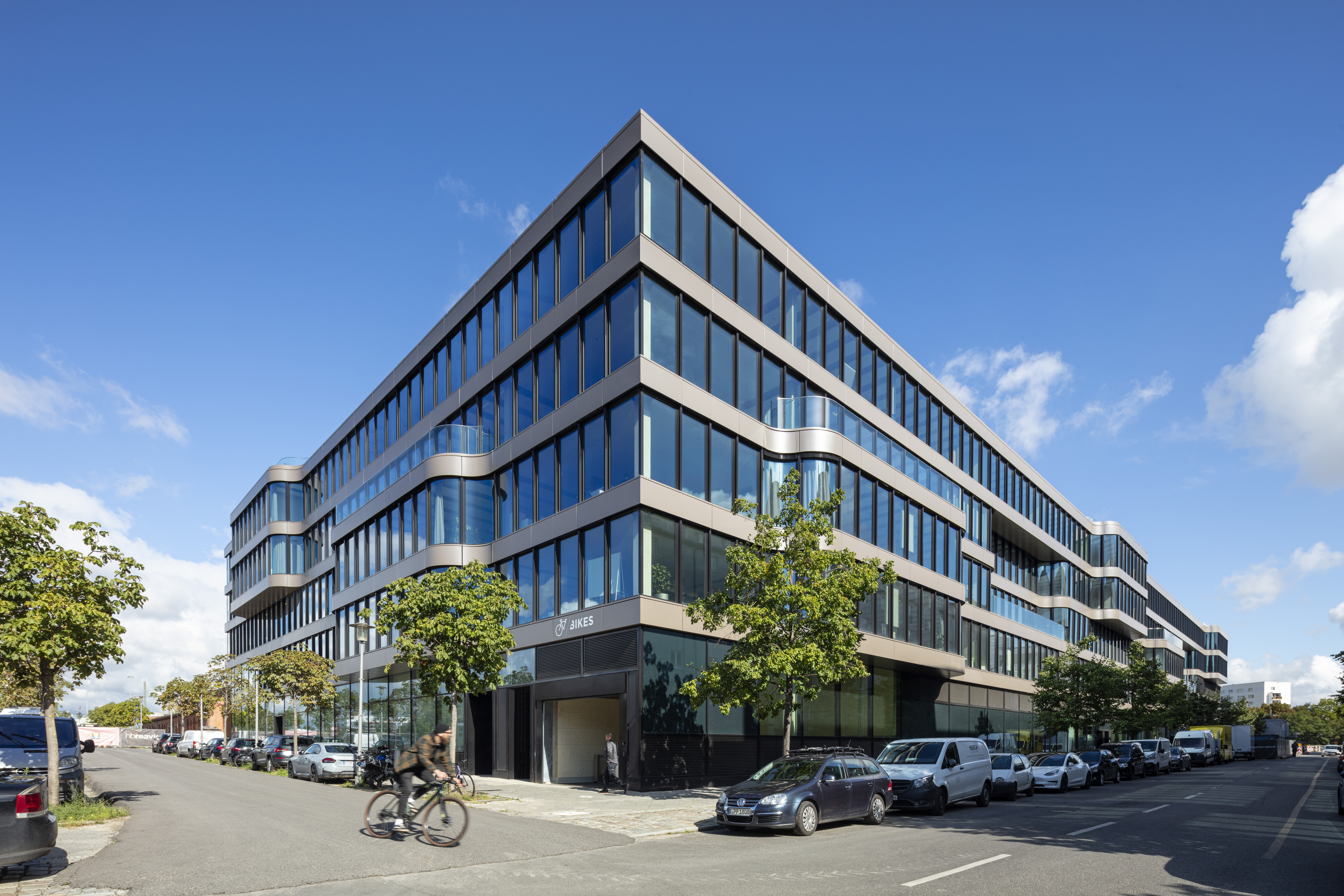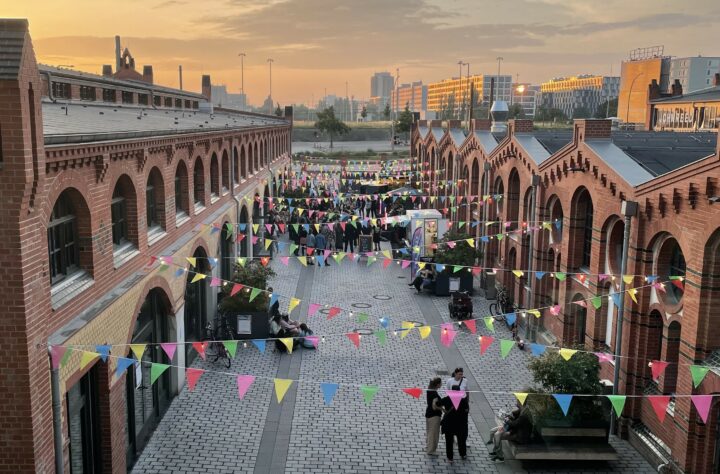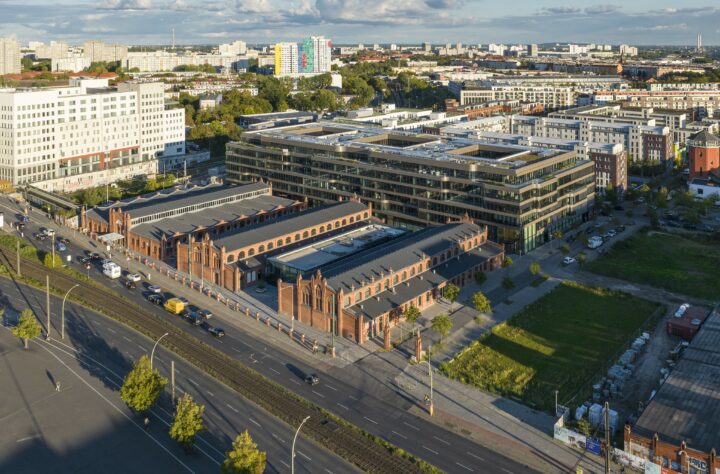Perhaps you have come across a plaque on the wall while shopping or in the office. It is square and has four letters at the bottom: DGNB. These stand for “German Sustainable Building Council”. The plaque itself in turn stands for the fact that the property has been certified as particularly sustainable. Around 6,000 such buildings exist in Germany today. The DSTRCT.Berlin, which is currently under construction and will accommodate companies such as Strato and home24, is also (pre)certified by the DGNB. But what exactly does that actually mean? What criteria must a building fulfil to be sustainable?

Ecology: from land recycling to emissions
First of all, a bundle of ecological criteria is checked. These include, for example, land use: the aim is to ensure that as little natural soil and open space as possible is resealed through construction measures. This criterion – which was awarded a pleasing 100 out of 100 points by the DSTRCT.Berlin, since the property was already built on before and the land is virtually recycled – is included in the pre-certification with a weighting of around two percent. In addition, the ecological block evaluates, among other things, the consumption of resources in the construction of the building as well as the anticipated emission-related environmental impacts. This is included in the overall assessment with six and eight percent respectively. The DSTRCT.Berlin achieves just under 80 out of 100 points in each of the two criteria mentioned.
Social: feel-good places with openness to the neighbourhood
Socio-economic criteria follow. These include, among other things, the quality of stay inside, but also on the outdoor areas. Here, the DSTRCT.Berlin once again achieves 100 points. We are particularly pleased with this rating, because we have a clear claim: office landscapes should basically be places of wellbeing. Places that caress the soul and strengthen one’s own performance and, of course, one’s own health. Appropriately, the socio-cultural field also examines visual comfort and brightness in the rooms: natural light has a positive effect on people’s mental and physical health. In addition, daylight offers a corresponding energy-saving potential, as less artificial lighting is required. The extensively glazed new building consequently received almost 90 points. A third aspect that the DGNB counts among the socio-economic factors: Does the property offer uses for the public and the neighbourhood? This is the case in the DSTCT.Berlin: there will be a lively market hall including healthy shopping and gastronomy. The concept scored well with 80 points. The individual weighting of the socio-economic sub-criteria is between one and about five percent.

Technology: with intersections to ecology and social issues
Finally, some technical criteria should be mentioned: Here, the DSTRC.Berlin is outstanding (100 points) in the so-called mobility infrastructurre, for which the attractive bicycle garage was certainly decisive. We deliberately did without a complete conventional parking floor in the planning. The technical category also includes the ease of maintenance of the building structure (84 points in our case). Such criteria make it clear that the technical considerations positively intersect with the aforementioned ecological and socio-cultural areas: Mobility clearly aims at the social qualities, ease of maintenance in terms of low resource consumption at the ecological ones.

Platinum within reach
The list of points within the respective areas could be continued. In addition, there are areas that we have not dealt with further here – among them process quality: were sustainability aspects already taken into account in the tendering and awarding of construction services? Were there previous planning competitions for the design concept? The individual results show us where we can still exploit potential for improvement: We did not score 80 points to 100 points in every criterion. The overall result, on the other hand, shows us that we certainly did a lot right, because we were certified with GOLD. For the next project, we are aiming for one more level: PLATINUM. It doesn’t get any better than that.
